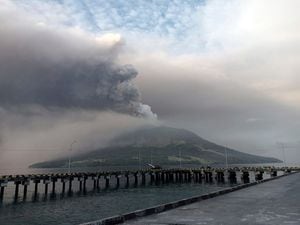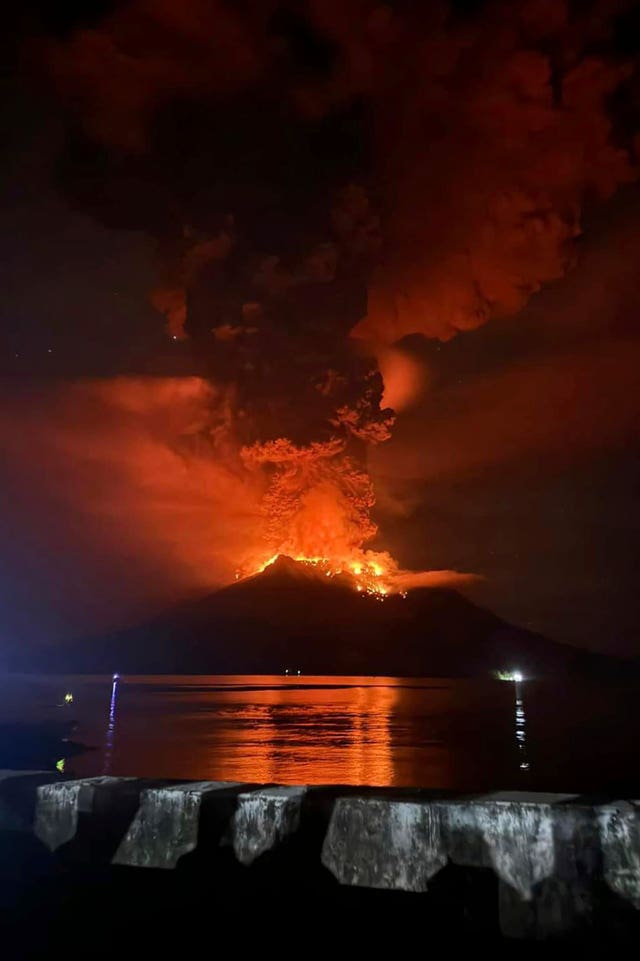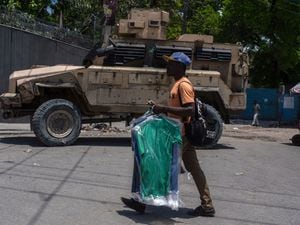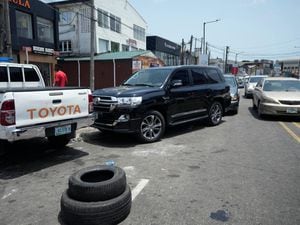Thousands evacuated and tsunami alert issued after Indonesian volcano eruption
Officials worry that part of the volcano could collapse into the sea, triggering a tsunami.

Indonesian authorities closed an airport and residents left homes near an erupting volcano on Thursday due to the dangers of spreading ash, falling rocks, hot volcanic clouds and the possibility of a tsunami.
Officials ordered more than 11,000 people to leave the area.
The volcano on the northern side of Sulawesi island had at least five large eruptions in the past 24 hours, Indonesia’s Centre for Volcanology and Geological Disaster Mitigation said.
The crater emitted white-grey smoke continuously during the day on Thursday, reaching more than 500 meters (1,600 feet) above the peak.
Authorities raised their volcano alert to its highest level.
People have been ordered to stay at least 6km (3.7 miles) from the 2,378ft mountain. More than 11,000 people live in the affected area and were told to leave. At least 800 have done so.
An international airport in Manado City was temporarily closed on Thursday as volcanic ash was spewed into the air.
Officials worry that part of the volcano could collapse into the sea and cause a tsunami.

Tagulandang island to the volcano’s north-east is again at risk, and its residents are among those being told to evacuate.
Indonesia’s National Disaster Mitigation Agency said residents will be relocated to Manado, the nearest city, on Sulawesi island, a journey of six hours by boat.
In 2018, the eruption of Indonesia’s Anak Krakatau volcano caused a tsunami along the coasts of Sumatra and Java after parts of the mountain fell into the ocean, killing 430 people.
Indonesia, an archipelago of 270 million people, has 120 active volcanoes. It is prone to volcanic activity because it sits along the “Ring of Fire”, a horseshoe-shaped series of seismic fault lines around the Pacific Ocean.





